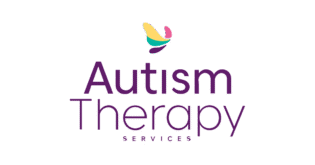
Becoming an ABA Therapist: Education, Training, and Beyond symphonyaba.com
Applied Behavior Analysis (ABA) therapy has emerged as one of the most effective, evidence-based approaches for helping individuals—especially children—develop essential life, communication, and social skills. ABA therapists play a crucial role in improving lives by fostering positive behaviors and reducing challenging ones. But what does it take to become an ABA therapist? The journey involves a blend of education, hands-on training, certification, and a genuine passion for making a difference.
In this article, we’ll explore the path to becoming an ABA therapist, including educational requirements, professional training, certification processes, and opportunities for growth beyond entry-level practice.
1. Understanding the Role of an ABA Therapist
Before beginning the journey, it’s important to understand what ABA therapy entails. ABA therapists use behavioral principles to help clients—often children with developmental differences—learn skills like communication, social interaction, self-care, and academic readiness.
They observe behavior patterns, analyze causes, and implement structured interventions under the supervision of a Board Certified Behavior Analyst (BCBA). An ABA therapist might work in homes, schools, clinics, or community settings, depending on the client’s needs.
This profession demands patience, empathy, attention to detail, and a deep understanding of human behavior. While the job is challenging, the opportunity to witness progress and growth in clients makes it profoundly rewarding.
2. Educational Requirements
The educational journey to becoming an ABA therapist varies based on the level of certification and career goals.
a. Entry-Level Positions (Behavior Technician)
Those beginning their career often start as Registered Behavior Technicians (RBTs). To qualify, candidates typically need:
A high school diploma or equivalent (some employers prefer an associate or bachelor’s degree).
Completion of 40 hours of ABA-specific training aligned with the Behavior Analyst Certification Board (BACB) standards.
This training focuses on behavior management, ethics, data collection, and the basics of implementing ABA plans.
b. Mid-Level Roles (Assistant Behavior Analyst)
Individuals aspiring to advance can become Board Certified Assistant Behavior Analysts (BCaBAs). This requires:
A bachelor’s degree in psychology, education, or a related field.
Completion of ABA coursework approved by the BACB.
Supervised field experience under a BCBA’s guidance.
c. Advanced Roles (Behavior Analyst)
The next step is becoming a Board Certified Behavior Analyst (BCBA). This level demands:
A master’s degree in ABA, psychology, or education.
Completion of supervised clinical experience (often 2,000 hours or more).
Successful completion of the BCBA certification exam.
Each educational milestone enhances your ability to design and implement more complex behavior intervention plans while broadening your career opportunities.
3. Certification and Licensure
Certification ensures that ABA therapists meet professional standards and adhere to ethical guidelines. The Behavior Analyst Certification Board (BACB) oversees certification for ABA professionals globally.
Registered Behavior Technician (RBT)
Training: 40 hours of online or in-person instruction.
Competency Assessment: Conducted by a BCBA or BCaBA.
Exam: A multiple-choice test covering behavior management, measurement, and professional conduct.
Board Certified Assistant Behavior Analyst (BCaBA)
Education: Bachelor’s degree.
Experience: 1,000 hours of supervised fieldwork.
Exam: Tests on data analysis, ethical practices, and intervention design.
Board Certified Behavior Analyst (BCBA)
Education: Master’s degree in ABA or related field.
Supervision: 2,000 hours of supervised fieldwork.
Exam: Comprehensive evaluation of behavioral principles, assessment techniques, and treatment planning.
In some states, ABA practitioners must also obtain a state license to practice legally. Requirements may vary, so it’s essential to research local regulations before applying.
4. Gaining Practical Experience
Hands-on experience is the cornerstone of becoming a skilled ABA therapist. Supervised fieldwork allows trainees to apply classroom knowledge to real-world settings, working with clients under the mentorship of a certified BCBA.
During this stage, aspiring therapists learn to:
Conduct behavioral assessments.
Implement treatment plans.
Record and analyze behavioral data.
Communicate effectively with families and caregivers.
These practical experiences not only strengthen technical skills but also teach the emotional resilience and adaptability needed in this field.
5. Essential Skills for ABA Therapists
Beyond academic credentials, successful ABA therapists share certain personal and professional qualities:
Empathy and Patience: Progress can be gradual, and empathy helps build trust and rapport with clients.
Strong Communication: Clear communication ensures collaboration among therapists, parents, and teachers.
Observation and Analytical Thinking: Identifying behavioral triggers requires careful attention to detail.
Consistency and Reliability: ABA therapy relies heavily on structured, consistent interventions.
Commitment to Ethical Practice: Following BACB ethical guidelines ensures client welfare and professional integrity.
These skills transform theoretical knowledge into meaningful, lasting outcomes for clients and families.
6. Career Paths and Growth Opportunities
Once certified, ABA therapists can choose from a variety of career paths. Common workplaces include:
Private Clinics: Providing one-on-one therapy for children and adults.
Schools: Supporting students with individualized education plans.
Hospitals or Rehabilitation Centers: Assisting with behavioral recovery and adaptive skills.
In-Home Services: Delivering therapy in a comfortable, familiar environment.
With experience, therapists can move into supervisory, consulting, or academic roles. Many pursue further education to become BCBAs, opening doors to leadership positions, research, and private practice.
7. Continuing Education and Professional Development
ABA is an evolving field, and continuous learning is essential. Certified professionals are required to complete continuing education units (CEUs) to maintain certification. These may include workshops, seminars, and online courses covering topics like ethics, advanced behavioral analysis, and emerging techniques.
Staying current ensures therapists provide evidence-based care and adapt to new developments in behavioral science. Joining professional organizations, such as ABA International or the Association for Behavior Analysis International (ABAI), can also enhance networking and career advancement.
8. The Rewards of the Profession
Becoming an ABA therapist is not just about earning credentials—it’s about making a lasting difference. Therapists witness firsthand how consistent, structured interventions can help clients gain independence, confidence, and communication skills.
Though the journey requires dedication, the personal and professional rewards are immeasurable. Each milestone achieved by a client serves as a reminder of the impact compassionate, science-based intervention can make.
Conclusion
The path to becoming an ABA therapist is one of education, training, dedication, and heart. From completing coursework and field experience to earning certification and pursuing professional growth, every step prepares you to make a meaningful difference in the lives of others.
ABA therapy continues to grow in recognition and demand, offering stable, fulfilling career opportunities for those committed to helping others reach their full potential. If you’re passionate about behavior science and driven to change lives, becoming an ABA therapist might be the perfect journey for you.
Report Story

